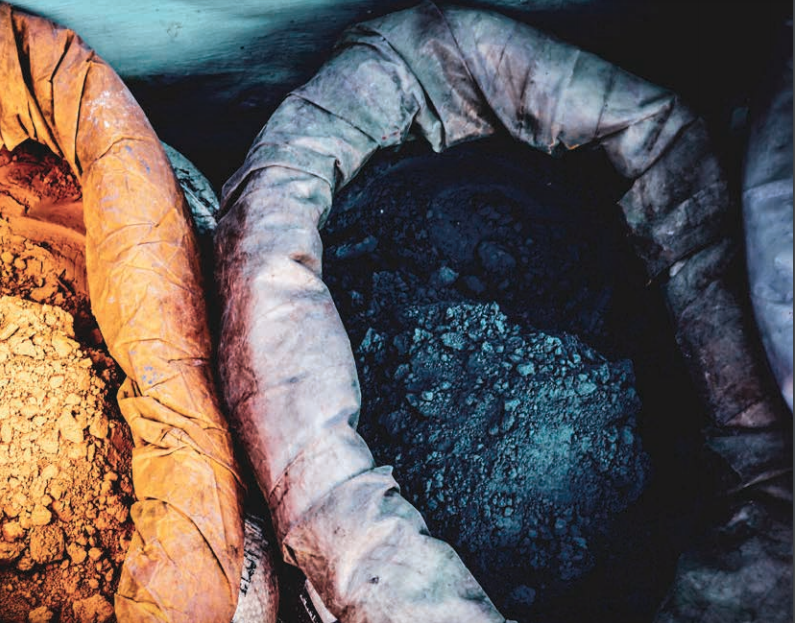
The global fashion industry has a far-reaching impact on the natural environment, from the extraction of raw materials to the production, distribution, wear and disposal of clothes, it’s had a huge range as has caused the world’s population to rise to a predicted 8.5 billion citizens by 2030, so this could cause the yearly global apparel consumption to increase by a massive 63%, from 62 million tonnes nowadays to as much as 102 million tonnes—which would be equivalent to even more than 500 billion additional T-shirts .
The current fashion system is unsustainable, our biggest risk is to carry on as we currently operate. There is scientific consensus that we are in times of climate and ecological emergency as set out in the UN commissioned Special Report on Global Warming of 1.5° and Global Assessment Report on Biodiversity and Ecosystem Services.
So this heavily impacted the fashion industry as it lead to it to have a response commensurate with global environmental challenges, it which it required a systems level change and development of a new fashion system based in a sustainability paradigm. Bringing about this change is complex given the global nature of the industry and its many different parts.
However, a transformation of the fashion industry, addressing its environmental impacts, has been signalled and these approaches and innovations need to be scaled outwards and upwards. The British fashion industry is well placed to respond with speed, agency and inspiration to create an environmentally and economically prosperous industry. This paper is created by Julie’s Bicycle and Centre for Sustainable Fashion (CSF) at London College of Fashion, University of the Arts London, on behalf of the British Fashion Council, enabled by DHL,which is an american courier parcel and mail express service.
It’s offering an overview of the environmental impacts of the fashion industry, a presentation of good practice in the UK, and how the industry can actively explore new definitions of good design and great business, including in:
- • Design and materials Integrating sustainable design principles into product, service and system creation
- • Green technology Fibre innovation, enzymology and molecular biology
- • Manufacturing and processing Supply chain transparency, blockchain technology, water use and energy efficiency
- • Packaging and delivery Innovation in shipping and logistics, reducing plastic and packaging waste
- • Education and engagement Pioneering new curriculum, changing cultures and driving demand for sustainable action
- • Strategy Setting carbon-based targets in alignment with the Paris Agreement; engaging with all above elements SMEs (Small and Medium-sized Enterprises) make up half of the businesses in the fashion ecosystem.
It was said by Dily Williams Director of Sustainable Fashion that:
“ At the moment there is no incentive for the fashion industry to change in the short term – so only those businesses with conscience and long-sightedness are making bold moves.”
So this causes the British Fashion Council existence to have the sole mission of harnessing the collective power of the fashion industry to nurture and inspire designer businesses and drive sustainable growth for the sector. The fashion industry is an important and pivotal part of the UK economy with the industry directly contributing £32.3 billion to the country’s GDP in 2017, with fashion also playing a major role providing the UK with 890,000 jobs.
It also happens that some of these British fashion businesses have been undisputed pioneers in environmental sustainability over the past decade, forging new standards, exploring novel concepts, and setting a higher bar for industry partners elsewhere in the world – from Stella McCartney redefining what a sustainable fashion brand looks like over the past 20 years, to M&S introducing one of the world’s most ambitious retailer sustainability strategies with its Plan A as early as 2007.
So the British Fashion Council, hopes to look forward in the future hoping more positivity will arise and it also aims in working with and supporting many more British fashion businesses in this journey.
Read More:
what is the sandwich method in fashion
what is the fashion capital of the world

fashionabc is a fashion technology platform, comprising a digital directory and various other digital tools and supply chain solutions for the fashion industry ecosystem, that focus on ethical fashion and sustainability. We are building inclusive digital transformation tools for fashion professionals who are willing to take steps towards a more sustainable ethical fashion industry, by adopting AI and DLT blockchain technology.
* building digital profile and IP solutions for fashion businesses
* tackle issues such as provenance and counterfeit in supply chain
* contribute to the construction of a meritocratic ethical fashion industry which is certified and part of the circular economy










